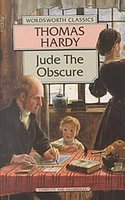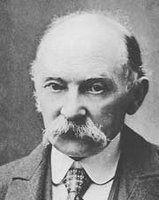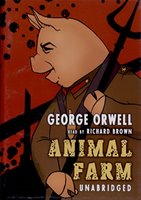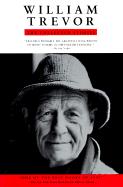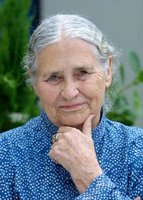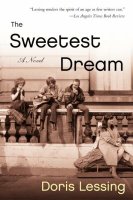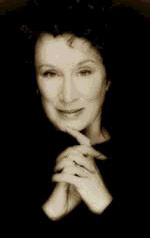
 BelovedToni Morrison
BelovedToni Morrison( a paper I wrote while working on my Masters)
Cultural Haunting In Toni Morrison's Beloved
In Literature of all time periods, ghosts have been used by the writer to provide readers with crucial information in a story, setting in motions a plot of revenge or atonement. These stories have brought millions of fans of supernatural literature a source of thrill and excitement. On another level, ghosts have served to bring to light hidden aspects of characters or undlerlying meanings of a story. Kathleen Brogan, author of Cultural Haunting: Ghosts and Ethnicity in Recent American Literature explains that, "The ghosts in recent African American Literature, while sharing these familiar literary functions, also serve another: they signal an attempt to recover and make use of poorly documented, partially erased cultural history" (Brogan 2). In her novel, Beloved, Toni Morrison uses cultural haunting in the form of a ghost to externalize the protagonist's (Sethe's) state of mind, to reconstruct an erased history of slavery, and to bring reconciliation between Sethe's past and present consciousness so that she may be freed to look forward to the future.
Before examining Morrison's Beloved, the phrase "cultural haunting" must be defined. As I previously stated, cultural haunting is different from the more well-known ghost story which blossomed during the nineteenth century. Brogan states that this genre of short fiction leaves us with a "thrilling fireside tale of haunted houses, graveyard revenants and Christmases past" (Brogan 5). The ghost story that evolved early in the twentieth century introduced the subtle psychological studies of Henry James and Edith Wharton. Brogan goes on to explain, "these modern ghost stories recast supernaturalism as the hallucinatory projections of the self" (Brogan 5). Brogan clarifies the difference between these psychological hauntings of the self and cultural:
The story of cultural haunting ...brings to the foreground the communal nature of its ghosts. When the ghost of Beloved speaks of her life in the grave in terms appropriate to the slaveships, she clearly becomes more than an externilization of one character's longing and guilt; her return represents the return of all dead enslaved Africans. Stories of cultural haunting differ from other twentieth-century ghost stories in exploring the hidden passageways not only of the individual psyche but also of a people's historical consciousness. Through the agency of ghosts, group histories that have in some way been threatened, erased, or fragmented are reuperated and revised.
(Brogan 5)
Linda Krumbholz, in her essay, "The Ghosts of Slavery," interprets that Morrison "constructs a parallel between he individual process of psychological recovery and a historical or national process" (Krumbholdz, ...A Casebook 107). Sethe describes the relationship between the individual and historical unconscious, an unconscious that is evoked into consciousness by the ghost of her dead child. The following exerpt from Beloved is an example of this individual and historical parallelism:
If a house burns down, it's gone, but the place -- the picture of it -- stays , and not just in my rememory, but out there, in the world. What I remember is a picture floating around our there outside my head, I mean, even if I don't think it, even if I die, the picture of what I did, or knew, or saw is still out there. Right in the place where it happened.
(36)
Can other examples of individual and historical parallelism be found in the story?
For eighteen years from the tragic event of killing her own child, Sethe has repressed her past. Remembering only causes her more pain. Whether at home or at her work, she struggles to contain her memories: "Working dough, working, working dough. Nothing better than to start the days serious work of beating back the past" (73) Eventually, she can no longer contain he past and must confront it. With the return of Paul D and the arrival of Beloved in the flesh, all of Sethe's memories of the horrors of slavery materialize in human form. When Beloved returns from the grave, the past is also exhumed, to later be rebuired properly in the novel's " narrative tomb." (Brogan 27).
How does Beloved function as an alter ego for Sethe?
Beloved's ghost is introduced in the first two sentences of the novel, "124 WAS SPITEFUL. Full of a baby's venom" (3) The story begins with the baby ghost, nagging at Sethe's conscience in annoying ways. Sethe tries to ignore the fact that the baby ghost is making her a slave to the past, as well as affecting her family and community. The only characters living at 124 who are afraid of the ghost are Sethe's two sons, Bulgar and Howard, who survived their mother's attempt to kill them when she took the life of her "crawling already" baby. Eventually, they both run away from 124, in fear:
...the sons, Howard and Bulgar, had run away by the time they were thirteen years old -- as soon as merely looking in a mirror shattered it (that was the sign for Bulgar); as soon as two tiny handprints appeared in the cake (that was it for Howard). Neither boy waited to see more; another kettleful of chick peas smoking in a heap on the floor; soda crackers crumbled and strewn in a line nest to the door-sill. Nor did they wait for one of the relief periods; the weeks, months even, when nothing was distrubed.
(3)
Why are they afraid and the others not? Why do they flee when Sethe, Denver and Baby Suggs remain? Is it the ghost they are aftaid of or something else? It is my opinion that Sethe's unstable mental condition is signified in the commotion of the ghost of her murderd baby. The inner turmoil that she is trying to suppress is exhibited physically in the actions of the ghost and in turn forces her two sons to flee 124.
Trudier Harris's essay, "Beloved: Woman Thy Name is Demon," raises certain questions concerning the demonic aspect of the haunting that Sethe is experiencing in the story. It is quite an emotional dilemma for the reader. "Does the guilt deserve the punishment of the demonic? Is infanticide so huge a crime that only other-world punishment is appropriate for it?" (Harris Memory and...134) In spite of what other opinions might be, Sethe comes to believe that she deserves punishment and allows herself to become Beloved's victim, relinquishing her own will to survive. Apparently, Morrison does not believe Sethe deserves such a fate as to be consumed by her own guilt and pain, personified in Beloved. Therefore, can we say this a punishment that Sethe inflicts upon herself for killing her child?
While looking at Sethe's individual experiences and history, we must consider the "Sixty million and more" to which Morrison dedicated her book. It is not only Sethe and her family who are haunted by the past, but an entire race of people who were taken from their homeland and enslaved. It is through Beloved's ressurection and reappearance in Sethe's life tht an erased past is brought into view for the characters, and for the reader as well. Re-creating a history that has been "ghosted" or erased by the selective amnesia of America's nation building is what Morrison does so well through the fictional narrative of Beloved; making the invisible history visible by incorporating elements of African folklore and culture. In the Autobiography of Leroi Jones, Amiri Baraka gives us his explanation as to why so much is missing from the slave history of the world: "In the US and the Western world generally, white supremacy can warp and muffle the full recognition of a black person of this history, especially an "intellectual" trained by a system of white supremacy"(Baraka 46). Can we say that is the only explanation? Does the responsibility of this missing history rest solely on the white race?
Through the characters of Beloved, Morrison brings to light a quashed history which exposes the shame, pain and powerlessness for the victims of slavery. Morrison expresses these feelings on an individual level as well as communal. Beloved, the ghost, initiates and "stimulates the formation of a family unit of love and support in which family members can provide for each other in ways that slavery has denied them" (Krumbholz 115). In addition to each individual characters' ghost and the fictional community's ghost, Beloved also becomes the reader's ghost, forcing us to face the historical past as a living and vindictive presence. Beloved arouses the repressed memories of slavery for both the characters in the story and the readers of the story. Beloved, the ghost, calls forth to Sethe's memories as the novel Beloved catalyzes reader's knowlegde of historical atrocities to be brought to the surface. Can we say that readers who wish to deny--or not fully understand the history and atrocities of slavery, have a more difficult time understanding this story as a neo-slave narrative?
In her essay, "Unspeakable Things Unspoken," Morrison uses the analogy of the reader being "snatched, yanked, thrown into an environment completely foreign...snatched just as the slaves were from one place to another, without preparation and without defense" (Morrison, Within the Circle 396) Through the ghost of Beloved, the reader is pulled into another time and place while being forced to confront the past evils of slavery along with Sethe. Beloved brings the reader back to the beginning of slavery through the character of Denver when she questions Beloved: "What was it like over there, where you were before Can you tell me?"(75) It is here that Beloved relates a long ago past that her spirit remembers: " I'm small in that place...Hot. Nothing to breathe down there and no room to move in...A lot of people is down there. Some is dead." Through Beloved's recollection, a history of a slaveship is related to provide a connection between past and present.
The paradox of Beloved is that in order for Sethe to obtain freedom from the ghost of her past, she must submit to it and accept it. "Beloved evolves into a ghost story of healing," says Gurleen Grewal, "because Sethe and the other charachters move from being possessed by the past to possessing the past and themselves" (Grewal 160). The more Sethe gives in to the ghost's desires, the more of herself is lost. Beloved devours Sethe's life and "swelled up with it." (250).
After Sethe gives all her substance to Beloved, she cannot satisfy the ghost. Beloved has an insatiable hunger and thirst. Appeasement of physical hunger is interchanged with the aural intake of story and song, oral forms of communication characteristic to African culture. "After the joy of discovering each other, Beloved's recriminations begin and Sethe cannot apologize enough," explains Grewal. (Grewal 160) There is no filling the void, and the damage done to Beloved is irreparable. The deep guilt that haunts Sethe cannot be obviated or consoled. It seems as if Sethe will succumb to her past and her guilt. She surrenders control, her job, and her sanity--"broke down, finally, from trying to take care of and make up for" (243). The demonic past threatens to engulf the haunted present. If Beloved is allowed to continue to exist, Sethe will be destroyed. The demon, the represented past, must be exorcised.
At the end of the story there is movement from possession to exorcism plotted by Morrison's novel. Brogan tells us, "Through ritual reeanactment, an individual or group may reconstruct the past in order to come to terms with their cultural identity and the history surrounding it" (Brogan 27). By taking possession of that past, it can be confronted and accepted, however, should never be forgotten. The "demon" of that past must be exorcised in order to obtain cultural renewal, but if forgotten, history will repeat itself.
As the story nears its denoument, a near reenactment of what happened at Beloved's death takes place. When Denver's white employer arrives in the midst of the exorcism ritual, Sethe, confused, believes him to be schoolteacher, coming to take her and her children back into slavery. She relives the horrible event all over again when she sees him "coming into her yard...coming for her best thing...she flies..." (262). The significant difference this time is that Sethe attacks the white man instead of her children. Another important consideration is that this time, thirty neighborhood women gather at 124 to provide the community support denied Sethe at the time of the murder. The community has taken responsibility for the act of neglecting one of their own, and come forward to rectify it. They accept Sethe back into the community that had expelled her. Their cries of "Yes yes, yes, oh yes" (258) reverse the "No. No. Nono, Nonono" that enters Sethe's mind just before the slaying of her infant daughter. (163) Krumbholz summarizes the exorcism of Beloved:
As a freed woman with a group of peers surrounding her, Sethe can act on her motherlove as she would have chosen to originally. Instead of turning on her children to save them from slavery, she turns on the white man who threatens them. The reconstruction of the scene of trama completes the psychological cleansing of the ritual, and exorcises Beloved from Sethe's life.
(Krumbholz 119)
Her directing the ice pick at Bodwin represents a symbolic "pointing the finger" that names white guilt for slavery. (Brogan 84) Sethe can finally " lay down the sword and shield" that she needed to keep her memories at bay. (86)
At the end of the story, we are uncertain as to what becomes of Beloved. We are left with the impression that her spirit could still be haunting the woods near the water as the following passage states:
Down by the stream in back of 124 her footprints come and go come and go. They are so familiar. Should a child, an adult place his feet in them, they will fit. Take them our and they disappear again as though nobody ever walked there.
(275)
What does this ending mean to you? Is there an ending at all?
Works Cited
Baraka, Amiri. "The Autobiography of Leroi Jones." Major Modern Black American Writers. Ed. Harold Bloom. New York: Chelsea House, 1995.
Brogan, Kathleen. Cultural Haunting: Ghosts and Ethnicity in Recent American Literature. Charlottsville: University of Virginia Press, 1998.
Grewall, Gurleen. "Memory and the Matrix of History." Memory and Cultural Politics. Eds., Amiritjit Singh, Robert E. Hogan, and Joseph T. Skerrett, Jr. Boston: Northeastern University Press, 1996.
Harris, Trudier. "Beloved; Woman Thy Name is Demon." Memory and Cultural Politics. Eds., Amiritjit Singh, Robert E. Hogan, and Joseph T. Skerrett, Jr. Boston: Northeastern University Press, 1996.
Krumbholz, Linda. "The Ghosts of Slavery." Toni Morrison's Beloved, A Casebook. Eds. William L. Andrews and Nellie Y. McKay. New York: Oxford University Press, 1999.
Morrison, Toni. Beloved. New York: Penguin Group,

 Augusten Burroughs
Augusten Burroughs











